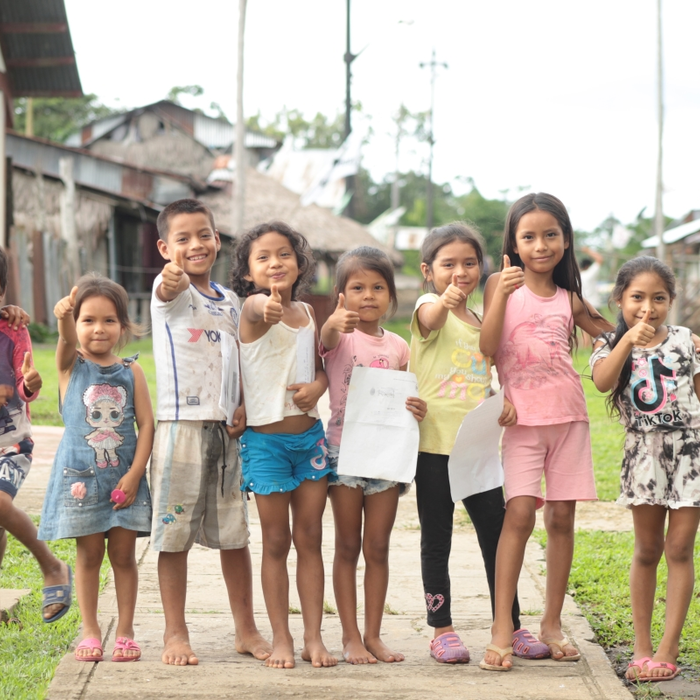Delivering Distance Learning in Emergencies
 Photo Credit: Media Inc.
Photo Credit: Media Inc.
What is distance learning?
Distance learning is teaching and learning where educators and learners are in different physical spaces. Often used synonymously with distance education, distance learning takes place through one of four modalities: audio/radio, video/television, mobile phone, and/or online learning platforms. Printed and digital texts often accompany these modalities or could be a fifth modality in cases where other technology is not available.
Distance Learning Definitions
DownloadWhen and why is distance learning used?
Distance learning can be a temporary and short-term strategy when in-person learning cannot take place, such as in emergencies, crises, and conflicts. It can also be designed as a permanent and long-term strategy where educators and learners are in separate physical spaces throughout the learning process. Distance learning can be designed for multiple purposes including as the main form of instruction, or as complementary, supplementary, or additional support.

Who is distance learning for?
Distance learning can be designed for all ages and levels, from preschool learners through adults in nonformal learning programs or higher education. Audio and video content transmitted through radio or television require less technological literacy. In general, audio and radio programming has been tried and studied for younger audiences, as well as out-of-school youth and adult learners such as in-service teachers.
Video programming has been designed for all ages, including educational television broadcasts for preschoolers and interactive video lectures for secondary and tertiary students. Mobile phone programming varies greatly in design and technological literacy required but can be designed for all age levels. Online learning is more commonly used for older youth and adults who have higher levels of technological literacy.

How does distance learning work?
Distance learning can be implemented in different ways. Learners may participate asynchronously, completing the learning activities in their own time (e.g. learners watch a science experiment on video in their own time). Learners may also participate synchronously, where teaching and learning happens simultaneously in real time either in an online space (e.g. virtual classroom or learning management system) or through a concurrent broadcast (e.g. educational radio or video program). Finally, learners may participate in a mixed approach that engages both synchronous and asynchronous learning.
The below graphic this image was adapted from www.pearsoned.com/tips-moving-class-online-quickly/.

Strategic Recommendations
DownloadWhat phases should be followed in operationalizing distance learning?
No distance learning modality or program is ideal for teaching all skills to all learners in all contexts. However, intentional planning, design, implementation, and assessment ensures teaching and learning is inclusive and equitable. When planning, creating, and implementing distance learning programming, it is imperative to consider factors in the education system, learning environment, and home and community environment that will influence whether learning outcomes (both cognitive and socioemotional) will be achieved. Each governing body overseeing distance learning should choose the best approach and combination of modalities based on five core principles.
Phase 1 (Planning): Needs of marginalized learners and educators
Identify the immediate and long-term need(s) for distance learning. Ensure the unique needs of marginalized learners are at the center of this needs assessment.
Phase 2 (Planning & Designing): Technological infrastructure, connectivity, and web-hosting systems; Learner and educators’ access to technology and platforms; and Existing content by modality, grade, and age level
Start with what exists (technology, infrastructure, and content) and create new content based on identified needs.
Below are three checklists developed to guide decision-making on which modalities and technologies to use:
- UNICEF’s Remote Learning COVID-19 Response Decision Tree and Contingency Planning, Risk Reduction, Preparedness and Response Framework
- World Bank’s EdTech Decision Tree for Ministries of Education (K-12 focus)
- USAID and INEE’s Checklist for Information Communications Technology Interventions to Support Education in Crises and Conflict Settings
Phase 3 (Designing): Training and support of educators and learners
Empower and support all educators and learners. Ensure educators, learners, and families have the technological literacy and skills for their roles in distance learning. Provide intentional support for educators and learners, especially those who have historically lower access to distance learning, and ensure support is designed according to universal design for learning principles.
Another evidence-based approach, the SAMR Framework assesses how technology is being used in instruction. SAMR looks at teaching and learning in four stages, the first two (substitution and augmentation) focus on enhancing learning and the last two (modification and redefinition) on transforming the learning experience.
Phase 4 (Monitoring & Evaluation): Systems to monitor end evaluate teaching and learning
Set up data and information systems to collect, analyze, and share progress and outcomes. Ensure that all users are benefitting from and thriving through distance learning, and collect data for historically underrepresented groups. Make corrections to ensure equity and inclusion are achieved and gaps are redressed.
Phase 5 (Implementing): Resources to roll out and sustain distance learning
Mobilize resources to implement and/or expand distance learning.
Build and expand partnerships between government agencies, community and international organizations, tech companies and private-sector providers, and content developers to ensure an inclusive and equitable systems approach is employed and distance learning initiatives have adequate resources to be sustained.
Read more about...
Distance Learning Monitoring and EvaluationRelated Blog Posts

Unlocking a World of Learning

Exchanging Ideas to Grow Remedial Education Programs
